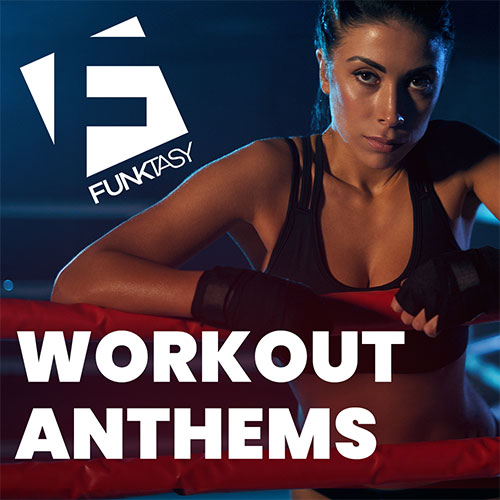A drum machine is not a compromise. It is a tool and a recording goldmine. It is a weapon for any artist in need of a beat.
Today’s drum machines have gone from being yesteryear’s tool to imitate drums or various percussion instruments to being a hi-tech composition machine complete with sequencing and synthesizer features built in.
Rhythmicon Was The First Drum Machine Produced In The 1930s
Though drum machines began their rise to fame in the 1980s with the burgeoning hip-hop scene, their history can be traced back as far as the 1930s.
At that time, a machine known as the Rhythmicon was produced. The Rhythmicon was the world’s first drum machine. It could play sixteen pre-programmed rhythms, fairly advanced for the time.
Bad news though. Despite its inventiveness, when the Rhythmicon was first released to the public, it struggled to sell. It made some sales during its initial publicity period but didn’t go further than that and the machine was not long after forgotten.
Chamberlin Rhythmate, Wurlitzer Side Man, And Drum Machine Templates In The 1960s
Following the Rhythmicon’s unfortunate crash-and-burn, the next attempt at creating a functional drum machine came in the late 1950s.
There were several attempts in the 1950s at creating a drum machine. There was a loop-based drum machine known as the Chamberlin Rhythmate in 1957. Then came the first commercially-produced drum machine called the Wurlitzer Side Man in 1959.
There were actually a number of similar basic drum machine templates released throughout the 1960s.
Why they didn’t sell or catch a trend, however, was because this was an era of live music with full-band instrumentation. No one was producing popular electronic music in any fashion that wasn’t seemingly obscure, strange, or tucked so far into a niche that it was impossible to find for the average consumer.
Drum Machines Rise Up In #1 Hit Singles From Phil Collins & Prince
The 1970s are when the precursor to today’s digital drum machines started to hit their stride and when artists in popular music began to be open to using them.
The first major #1 pop single in the United States to have a drum machine on it was Sly & the Family Stone’s “Family Affair” in 1971.
From there, drum machines were not quite standardized but numerous experimental groups throughout the 1970s would continue finding unique ways to integrate drum machine patterns into their recordings.
By the 1980s, drum machine technology had advanced to where digital sampling was not only possible but trendy. Tracks like Phil Collins’ “In the Air Tonight”, and much of Prince’s work on his albums “1999” and “Purple Rain” used drum machines and digital sampling to achieve their characteristic sound.
From Roland TR-808 To MIDI Programs, Digital Sampling, & Hip-Hop
The Roland TR-808, aka the 808, is the most popular drum machine of all time. Iconic.
First introduced in 1980, the Roland TR-808 was only in production for a few years and was discontinued in 1983. Within that time span though, the 808 was one of the first machines to allow composers to create their own rhythm instead of having to use presets.
The 808 would play a key component in the development of hip-hop with its deep bass drums and idiosyncratic selections of sounds. The 808 would find its way onto more hit records than any other drum machine and is held up today as one of the most influential instrument inventions of the last 100 years.
Through the 1990s and into the contemporary period of music, drum machines continued to advance, adding in more features and capabilities far past the near-perfect sounds of the TR-808. From the introduction of MIDI programming in 1983 to commercial drum machine, digital leaps were taken.
At the same time, digital sampling in recording continued on a rise alongside sequencers, software-based sequencers, looping capabilities, and real-time programming.
The negative or dark side of drum machines and these advancements is that some major record labels – though not all – began to prefer to use drum machines to create rhythms instead of paying a studio drummer.
Drum Machine VST Plugins Rule Modern Music Recording
Though they still make standalone drum machines today, most musicians who use a drum machine take them on through different software and multi-purpose hardware.
What you’re more likely to find are drum VST plugins. Drum machine plugins or VSTs are virtual instruments. They use samples that allow you to program your own drum performances, snapping beats into place as if you were behind the kit.
Some of the best drum VST plugins include names like XLN Addictive Drums 2, Native Instruments Studio Drummer, Native Instruments DrumLab, Toontrack EZdrummer 2, Toontrack Superior Drummer 3, Heavyocity Damage, and the Roland Cloud Drum Machine Collection.
The act of producing a rhythm by machine is no longer dependent on human musicians or standalone hardware.
As we take a step back into the history of the drum machine, from the 1980s to today, we have to acknowledge how important it’s been to the hip-hop community in finding their own voice. From the beginnings with the Roland TR-808 through to today’s many different high-tech multi-purpose drum machines, you wouldn’t have hip-hop, rap, or modern R&B if you didn’t have drum machines to toy with.
The ultimate legacy of the drum machine of old, now that they’ve been replaced by drum VSTs, is that it’s what put the emphasis back on the beat.
Drum machines, for all intents and purposes, helped to shift consumer attention away from non-rhythmic elements of music composition and instrumentation, moving the focus to the creativity and power that can be put into rhythm.








